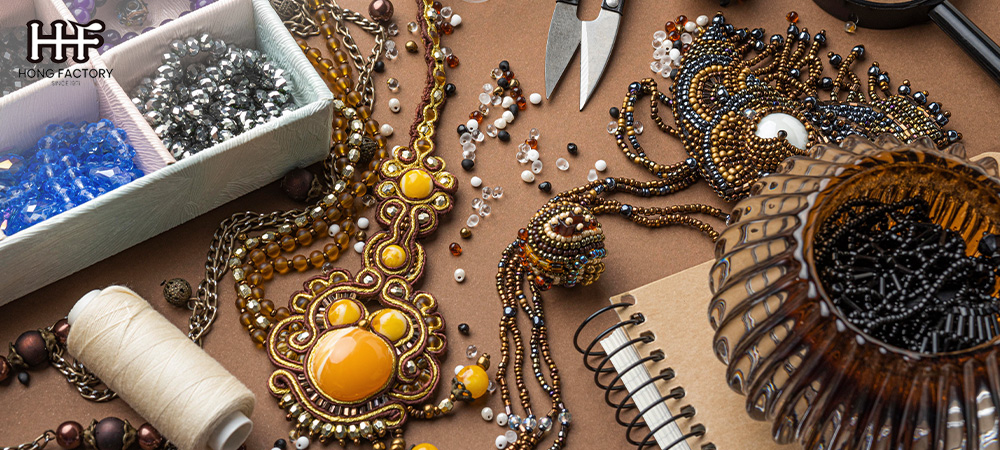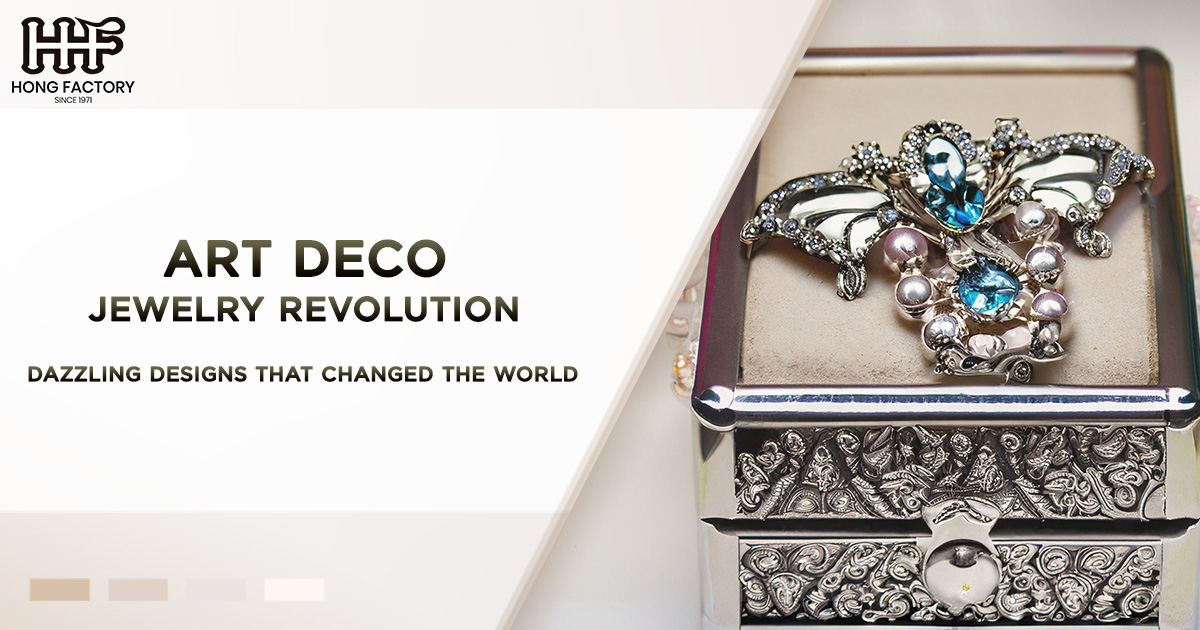Art Deco, a design movement born in the 1920s and 1930s, revolutionized the world of jewelry. This era not only introduced striking aesthetics but also heralded a shift in the way people thought about adornment. With its emphasis on geometric patterns, bold colors, and modern materials , Art Deco jewelry became a symbol of innovation, sophistication, and luxury.
The Origins of Art Deco
The Art Deco movement emerged after World War I, during a time of great social and cultural change. The name “Art Deco” derives from the Exposition Internationale des Arts Décoratifs et Industriels Modernes, held in Paris in 1925. This exhibition showcased a new style that embraced modernity, breaking away from the flowing lines of Art Nouveau and the ornate designs of the Victorian era.
Art Deco drew inspiration from a wide range of sources, including ancient Egyptian art, African tribal patterns, and the machine-age aesthetic. The result was a bold, fresh approach to design that permeated fashion, architecture, and, perhaps most significantly, jewelry. Silver necklace women.
The Defining Characteristics of Art Deco Jewelry
Geometric Patterns and Symmetry
One of the most striking features of Art Deco jewelry is its use of geometric patterns . Unlike the natural curves of previous styles, Art Deco pieces were defined by sharp angles, straight lines, and symmetrical designs. These elements reflected the growing influence of modern industrialism and the fascination with technology and progress during the early 20th century.
Shapes like triangles, circles, zigzags, and squares dominated the design landscape. The symmetry and repetition of these shapes created a sense of order and precision, which appealed to the modern sensibilities of the time. Whether in necklaces, brooches, or earrings, these geometric designs gave Art Deco jewelry a distinctive, forward-thinking look.
Bold Colors and Precious Gems
Bold colors were another hallmark of Art Deco jewelry. Designers of the era sought to create eye-catching contrasts through the use of brightly colored gemstones and materials. Diamonds, emeralds, rubies, sapphires, and onyx were frequently combined in daring color schemes that reflected the glamour and opulence of the Roaring Twenties.
One of the most notable trends of the time was the use of contrasting black and white in jewelry, often achieved through the pairing of diamonds with onyx or black enamel. This striking combination of light and dark mirrored the Art Deco aesthetic in architecture and fashion, where monochromatic palettes were often favored.
Modern Materials and New Techniques
Beyond traditional gemstones and metals, Art Deco designers embraced modern materials such as platinum, Bakelite, and other early plastics. The use of platinum, in particular, symbolized the cutting-edge nature of the movement, as it allowed for intricate, lightweight designs that were impossible to achieve with heavier metals.
Advances in technology also allowed for more precise cutting techniques, enabling designers to craft gemstones into the sharp, angular shapes that defined the era. The introduction of the emerald cut, for instance, was a direct result of the Art Deco influence, as it allowed for the creation of rectangular stones that fit perfectly into the geometric designs.

The Social and Cultural Impact of Art Deco Jewelry
A Symbol of Female Empowerment
Art Deco jewelry was more than just a reflection of changing design trends; it was also a symbol of the evolving role of women in society. The 1920s saw women gain more independence and freedom, symbolized by the rise of the “flapper” — a liberated woman who rejected traditional gender roles and embraced a new, modern lifestyle.
Flappers wore shorter skirts, bobbed their hair, and adorned themselves with bold jewelry that matched their newfound independence. Art Deco necklaces, with their long, elegant lines, became a staple of the flapper aesthetic, while bold, geometric brooches and earrings added a sense of daring to their outfits.
These pieces of jewelry were not just accessories; they were statements of the modern woman’s confidence and autonomy. Thanks to Art Deco, jewelry was no longer just about showcasing wealth — it was about expressing individuality and power.
Global Influence and Cross-Cultural Inspirations
Art Deco’s impact on jewelry design was not confined to Europe or the United States. The movement was truly global, drawing inspiration from a variety of cultures and art forms. Ancient Egyptian motifs, such as the scarab beetle and the lotus flower, were frequently used in Art Deco jewelry, a trend that was fueled by the discovery of King Tutankhamun’s tomb in 1922.
Similarly, the influence of Asian and African art could be seen in the use of bold, exotic colors and patterns. The fascination with non-Western cultures during this time reflected a broader cultural movement that sought to break away from traditional European design norms and embrace a more global perspective.
This fusion of different cultural influences gave Art Deco jewelry a unique and timeless quality. Even today, the bold designs of the era continue to captivate collectors and fashion enthusiasts alike.
Lasting Legacy of Art Deco Jewelry
Enduring Popularity in Modern Fashion
Although the Art Deco period officially ended in the 1940s, its influence on jewelry design has endured for nearly a century. Many contemporary designers continue to draw inspiration from the movement’s emphasis on geometric patterns and modern materials , incorporating these elements into their own creations.
In recent years, Art Deco jewelry has made a significant comeback, with vintage pieces fetching high prices at auctions and modern reinterpretations appearing on runways and in fine jewelry collections. The sleek, timeless elegance of Art Deco designs makes them as relevant today as they were nearly a century ago.
Investment Value and Collectibility
Art Deco jewelry is not only prized for its aesthetic appeal but also for its investment value. Collectors around the world seek out rare pieces from the era, recognizing their historical significance and potential for appreciating in value. The combination of craftsmanship, high-quality materials, and distinctive design makes Art Deco pieces highly sought after in the fine jewelry market.
Some of the most famous jewelry houses, such as Cartier, Van Cleef & Arpels, and Tiffany & Co., were at the forefront of the Art Deco movement, creating masterpieces that continue to be admired and collected today. Owning an original Art Deco piece is not just about wearing a beautiful piece of jewelry; it’s about owning a piece of history.
Conclusion
The Art Deco jewelry revolution was a dazzling era of creativity and innovation that forever changed the world of design. Art Deco jewelry captured the spirit of a rapidly changing world, empowering women and setting new standards for beauty and craftsmanship. Today, the influence of Art Deco continues to shape the world of jewelry, proving that its timeless designs will never go out of style.
